Finding a porpoise in life
We’re very excited to have a guest blog written by Holly Dunn, Project Officer, at Sea Trust in Pembrokeshire. Holly is running an amazing photo ID project for harbour porpoises and she’s telling us all about it.
Sea Trust
Sea Trust is a non-profit community interest company established in 2003, working to better understand and help protect local marine wildlife, and to raise awareness in the local community. Sea Trust focuses much of its research on marine mammals, conducting land, ferry and small boat surveys. Much of this work has taken place at Strumble Head, Pembrokeshire, where it has become clear that this is a site of high harbour porpoise abundance.
The Harbour Porpoise
The harbour porpoise (Phocoena phocoena) is the most abundant cetacean in UK waters. Here in Pembrokeshire we have a number of spots around the coast such as Strumble Head and Ramsey Sound where you can see porpoises every day and often in large numbers. For many years now the harbour porpoise has been documented as a shy, elusive, often solitary animal that is difficult to study. However here in Pembrokeshire we regularly see the opposite. At certain sites the porpoise gather in large numbers and display behaviours that are rarely seen, including full breaching out of the water, travelling in groups and mating and other social behaviours.
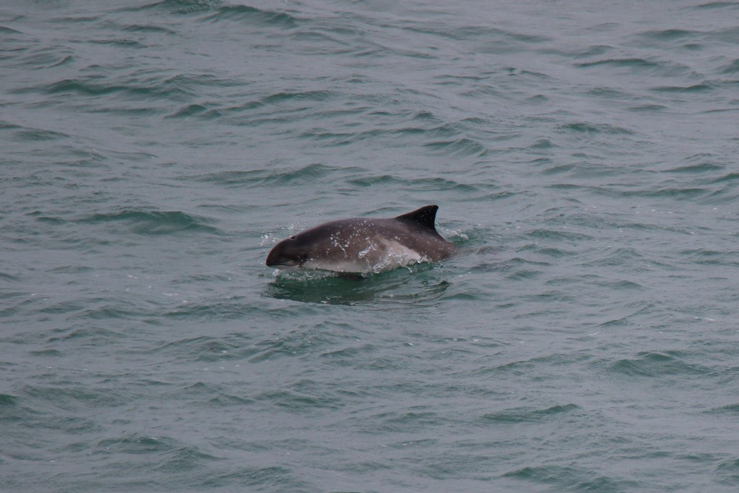
Harbour porpoise, photo taken from Strumble Head, Pembrokeshire. Image credit: Sea Trust
Porpoise sightings
Despite the fact that Pembrokeshire seems to be such a great place for porpoise sightings we know very little about the population here including; population size and status, survival, birth and death rates, life history and biology, group/social structure and local ranges and movements. For other cetacean species this information can be obtained through photo-ID surveys.
Photo ID is a commonly used method to identify and track many animals. It involves photographing body parts unique to individuals. A bit like human finger prints, many animals have distinctive physical features that are unique to each individual. Depending on the animal, these can be body parts, pigmentation patterns or permanent scars. From the stripes on a zebra to the shape of a fin on a dolphin. Marine mammals are often identified by their dorsal fins or their tail flukes. Photographs of individual animals are collected to make a catalogue for a species. Images collected over time can be matched using the same unique marks. This can tell us a lot about the individual animal and the local population.
Photo ID Project
With the large abundance of porpoises we have here in Pembrokeshire and their close proximity to the land, Sea Trust has taken full advantage of this opportunity and started a porpoise photo-ID project. Sea Trust are the first organisation in the UK to undertake a photo-identification project for harbour porpoises. Photo-ID is not commonly used for this species due to its challenges. Porpoises are very small in size and they often perform very subtle movements at the surface and are therefore difficult to spot compared to larger species such as dolphins. Also for many other species these types of surveys are boat based; porpoises are in most cases boat shy, meaning land-based surveys are the better option.
The porpoise photo-ID project has been running since April 2017 and as a result we now have the biggest harbour porpoise catalogue in the world, with over 120 individual animals identified. As photo-ID projects are often long-term, our current results are still very basic. However we have already seen some interesting results including residency patterns and group structure. For example, we have some individuals that stay in the area or at one site all year round, others that just visit in the summer months and others that are simply passing through. We have also, because of this project have been able to record and monitor interactions between a mother and calf pair, discovering that calves may stay with their mothers a lot longer than previously expected. These examples are just two of the incredible things we can find out about with photo-ID surveys. As we continue this project we will discover more and more so watch this space!
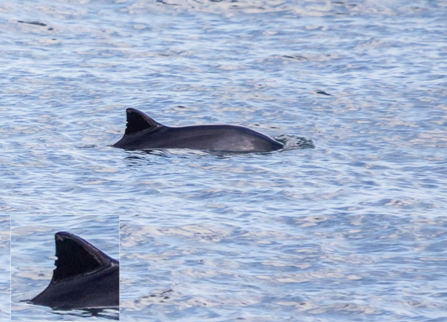

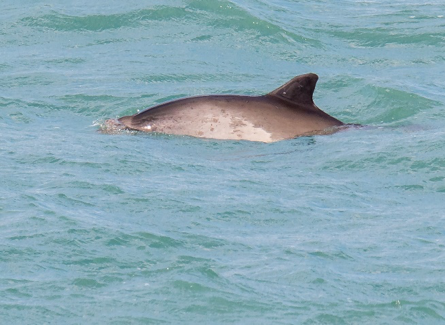
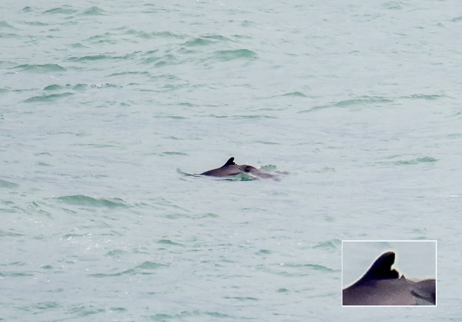
Some examples of identified porpoises: top left- Biscuit, top right- Blur, bottom left- Buzz, bottom right- Denty. Image credit: KenBarnett.
Peoples Porpoise Project
The porpoise photo-ID project is part of Sea Trust’s “Peoples Porpoise Project”. This project involves recruiting and training volunteers to take part in photo-ID surveys. Volunteers not only get a chance to be part of ground-breaking scientific research with real conservation goals, they get a chance to meet and socialise with new people, get a chance to be outside and interact with nature. It has shown to be a great way of positively influencing volunteers physical and mental health. Another triumph from this project is the development of Sea Trust’s Adopt a Porpoise scheme. This gives the general public a chance to see real-time results from the project with updates regular updates on the project and their adopted porpoise.
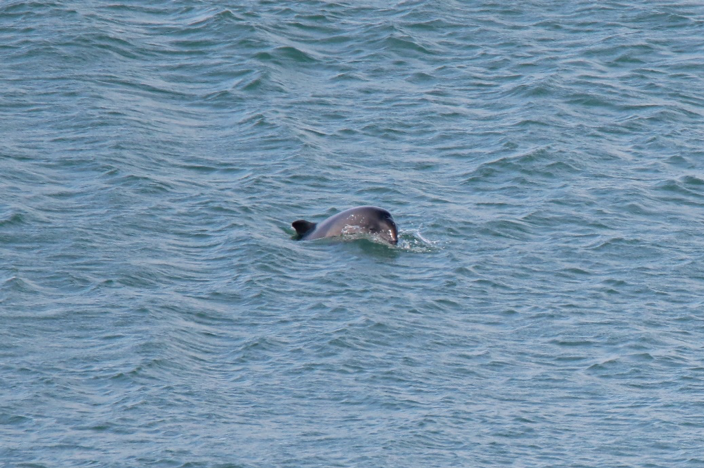
Photograph taken by Lifeforms Art’s Ben Hughes whilst volunteering for the Peoples Porpoise Project.
For more details on how to volunteer for the Peoples Porpoise Project or how to adopt a porpoise visit Sea Trust’s website at https://seatrust.org.uk/.

